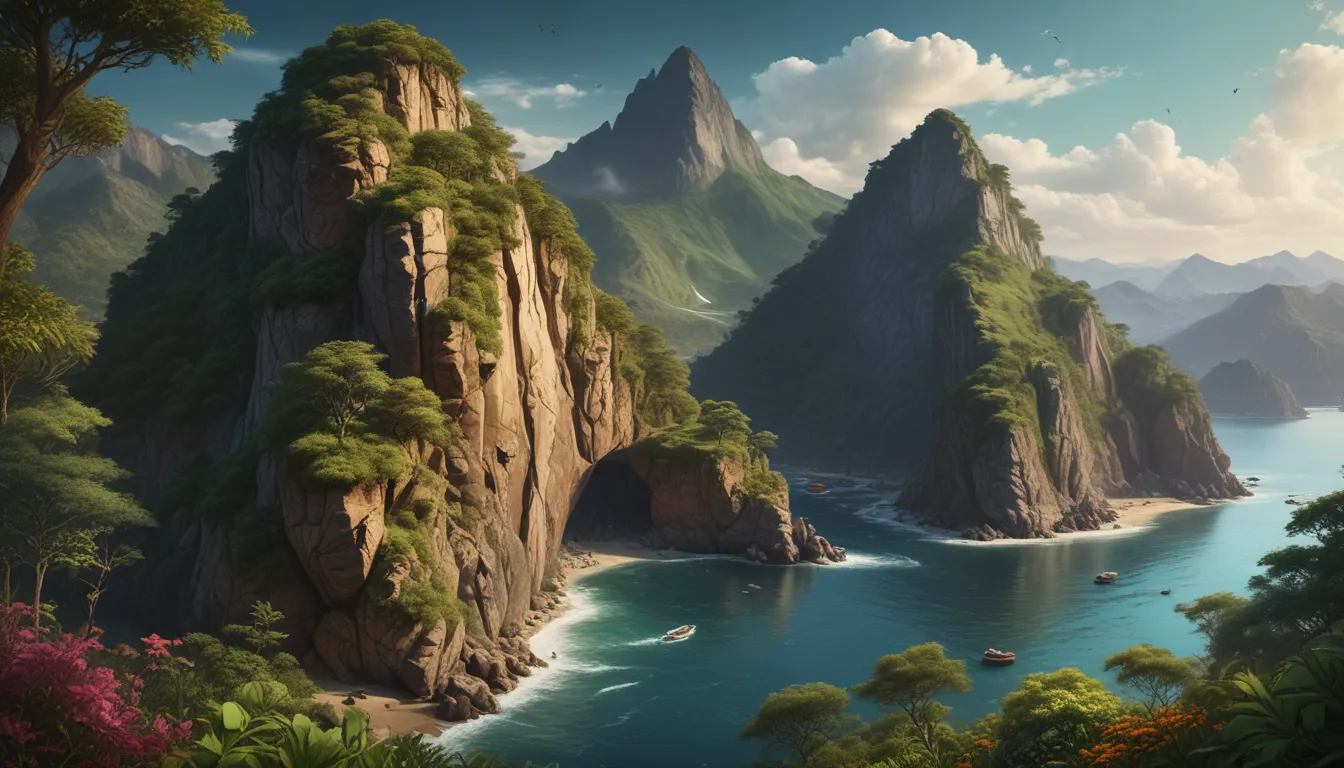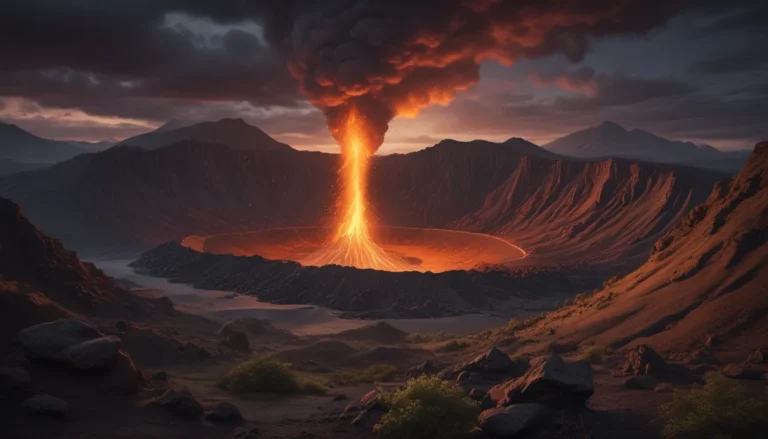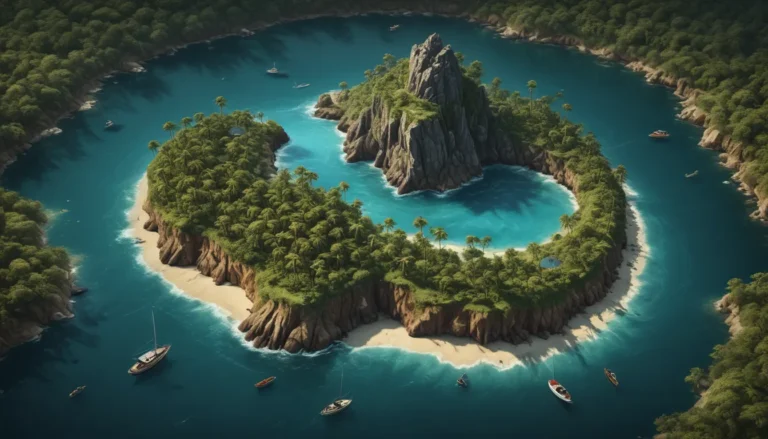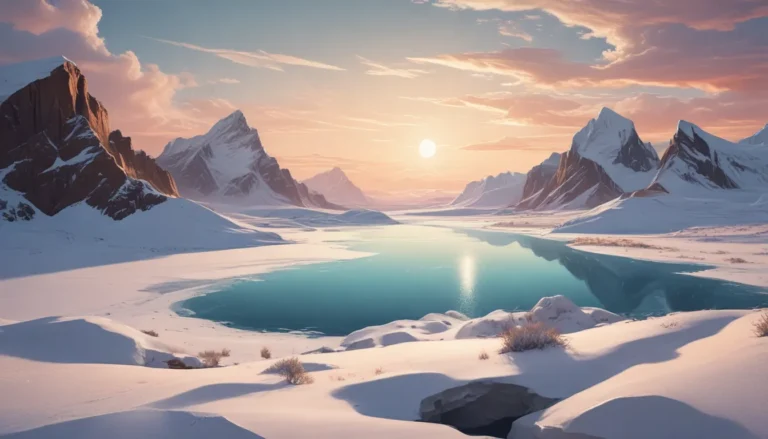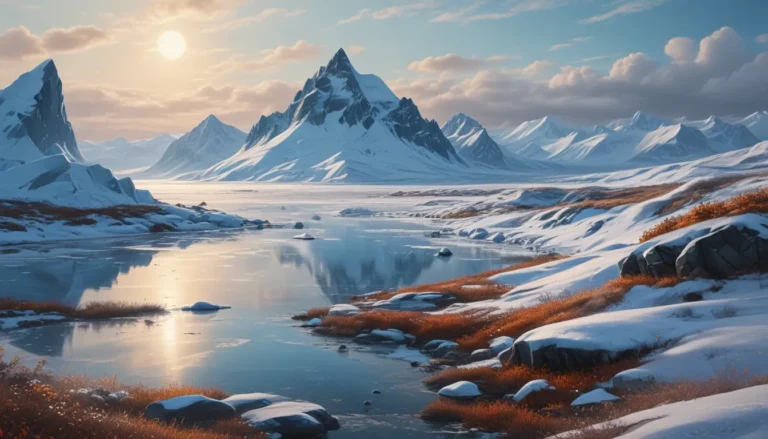A Note About Images: The images used in our articles are for illustration purposes only and may not exactly match the content. They are meant to engage readers, but the text should be relied upon for accurate information.
Biogeography, a captivating field of study, delves into the distribution of plant and animal species across the Earth’s vast surface. It explores the intricate relationship between living organisms and their environments, unraveling the hidden stories behind the patterns of life on our planet. From the plains of Africa to the rainforests of South America, biogeography sheds light on the factors shaping the diverse tapestry of life around us.
Exploring the Intricacies of Biogeography
Biogeography investigates the how and why behind the distribution of species across the Earth, offering valuable insights into biodiversity and ecological dynamics. By studying the patterns and processes that govern the distribution of plants and animals, scientists can better predict invasive species, identify conservation priorities, and unravel nature’s mysteries.
The Wallace Line: A Boundary of Biodiversity
Named after the renowned naturalist Alfred Russel Wallace, the Wallace Line serves as a distinct division between the Asian and Australian biogeographical regions. This boundary influences the distribution of plant and animal species in Southeast Asia, highlighting the impact of geography on biodiversity.
The Role of Continental Drift in Biogeographical Patterns
The movement of Earth’s continents over millions of years has significantly shaped biogeographical patterns. Continental drift has led to the formation of land bridges, isolation of populations, and the emergence of unique ecosystems, illustrating how geography influences the distribution of species.
Islands: A Haven for Endemic Species
Islands, with their isolated nature, often harbor a high number of endemic species—organisms found exclusively in specific locations. These unique species have evolved independently, adapting to their island habitats and contributing to the rich biodiversity of these isolated ecosystems.
Unveiling the Impact of Invasive Species
Biogeography plays a vital role in predicting and managing the spread of invasive species. By understanding species distribution patterns, scientists can identify vulnerable areas and implement effective measures to control invasive species, safeguarding ecosystems from potential threats.
Island Size and Species Diversity Relationship
The size of an island influences its species diversity, with larger islands typically supporting a greater variety of plants and animals. Larger landmasses can sustain larger populations, offer diverse habitats, and provide a wide range of resources, fostering greater biodiversity.
Beyond Land: Biogeography Explores Aquatic Ecosystems
While terrestrial biogeography is well-known, the field also extends to the study of marine and freshwater ecosystems. By examining the distribution of species in oceans, lakes, rivers, and other aquatic environments, biogeographers gain insights into the complex dynamics of aquatic biodiversity.
Biogeography: A Crossroads of Ecology, Geology, and Evolution
As a multidisciplinary field, biogeography draws upon ecology, geology, and evolutionary biology to unravel the intricate relationships between organisms and their environments. By combining different scientific disciplines, biogeography offers a holistic understanding of biodiversity patterns.
Islands: Laboratories for Evolutionary Studies
Isolated islands provide unique opportunities to study evolution, offering insights into speciation and adaptation processes. With limited species diversity, islands serve as natural laboratories for observing evolutionary phenomena and understanding biological diversity.
Mapping Conservation Priorities Through Biogeography
Biogeography aids in identifying conservation priorities by mapping out the distribution of endangered species and key habitats. By assessing biodiversity hotspots and vulnerable areas, biogeographers play a crucial role in setting conservation goals and protecting ecosystems.
Unlocking the Secrets of Biomes
Biomes, large-scale ecological areas defined by distinctive climate, vegetation, and animal life, are central to biogeography. Understanding the factors shaping different biomes worldwide provides valuable insights into ecosystem diversity and ecological dynamics.
Tracing Species Distribution Through Ice Ages
The movement of species during ice ages, characterized by glaciation and subsequent climate shifts, has influenced species distribution patterns. As ice sheets covered vast areas, species migrated to temperate regions, showcasing the impact of historical climate changes on biodiversity.
Biogeography and Disease Distribution
Studying the geographic distribution of diseases enables researchers to understand the spread of pathogens and identify risk factors. By analyzing disease patterns, biogeographers uncover insights into disease ecology and transmission dynamics.
The Amazon Rainforest: A Biogeographical Treasure
The Amazon Rainforest, known for its exceptional biodiversity, is a biogeographical hotspot teeming with unique species. Its intricate biogeography showcases the interplay between geography and biodiversity, making it a critical region for conservation efforts.
Unraveling Species Migration Over Time
Biogeographers study the historical movement of species, exploring migration and dispersal patterns throughout Earth’s history. By tracing the evolutionary journeys of organisms, scientists gain insights into how species have colonized different habitats and adapted to changing environments.
Biogeography and Climate Change Research
By examining how species respond to past climate changes, biogeographers contribute valuable insights to climate change research. Understanding the impacts of environmental shifts on biodiversity enables scientists to predict and prepare for future climate change scenarios.
Island Biogeography Theory: Insights Into Species Richness
Developed by Robert MacArthur and E.O. Wilson, the theory of island biogeography elucidates the factors influencing species richness on islands. This theory provides a framework for understanding patterns of species diversity and ecosystem dynamics on isolated landmasses.
Revealing Historical Connections Through Biogeography
By studying the distribution of related species across different regions, biogeographers unveil historical connections and ancestral migrations. Tracing the movement of species over time offers insights into biological evolution and the interconnectedness of different habitats.
Assessing Human Impact Through Biogeography
Human activities, such as habitat destruction and climate change, have profound effects on biodiversity. Biogeography serves as a lens through which to assess the impact of human actions on ecosystems, guiding conservation strategies and sustainable practices.
Conclusion: Embracing the Wonders of Biogeography
Biogeography unveils the intricate connections between living organisms and Earth’s geographic features, offering valuable insights into biodiversity and ecological dynamics. By exploring the mysteries of nature through a biogeographical lens, we gain a deeper appreciation for the delicate balance of life on our planet.
Frequently Asked Questions
-
What is biogeography?
Biogeography is the scientific study of the distribution of living organisms and their interactions with their environment across different geographic regions. -
Why is biogeography important?
Biogeography helps us understand the patterns of biodiversity, species migration, and ecosystem functioning, with implications in conservation, ecology, evolution, and human health. -
What are the main subfields of biogeography?
The main subfields of biogeography include historical biogeography, ecological biogeography, and conservation biogeography, each focusing on different aspects of species distribution and environmental interactions. -
How does biogeography contribute to conservation efforts?
By mapping species distributions and identifying biodiversity hotspots, biogeographers aid in setting conservation priorities and protecting endangered species and habitats. -
Can biogeography help us understand the effects of climate change?
Yes, biogeography offers insights into how species respond to climate change, providing valuable information to predict and mitigate the impacts of environmental shifts on biodiversity. -
How does biogeography help us understand human evolution?
By studying the distribution and movement of species, biogeographers infer the origins and dispersal patterns of early human ancestors, shedding light on human evolutionary history. -
What are some notable examples of biogeographical phenomena?
Notable examples include the Galapagos Islands, the Wallace Line, the migration of wildebeest in the Serengeti, and the unique biodiversity of rainforests and coral reefs, showcasing the diverse biogeographical phenomena around the world. -
How does biogeography contribute to agricultural practices?
Biogeography helps farmers understand optimal crop cultivation practices by studying species distributions and interactions. It also aids in predicting and controlling invasive species that can impact agricultural productivity. -
Is biogeography limited to studying Earth’s ecosystems?
No, biogeography extends to astrobiogeography and exobiogeography, exploring the possibilities of life on other planets and distant galaxies beyond Earth’s ecosystems. -
How can I get involved in biogeography?
Engage in citizen science projects, support biodiversity surveys, stay informed about research, or pursue a career in biogeography to contribute to the study and conservation of Earth’s diverse ecosystems.
As we journey through the realms of biogeography, we uncover the wonders of biodiversity and the intricate relationships between species and their environments. Delving into the complexities of nature, we gain a deeper appreciation for the beauty and resilience of life on our planet. Through the lens of biogeography, we embark on a voyage of discovery, unveiling the mysteries and marvels of Earth’s rich ecosystems.
